Second chapter of our tutorial series dedicated to off-road driving. This time we take a closer look at what you need to drive to explore the world safely.
Now that I have explained the vital importance of preparation in our previous chapter on off-roading, let’s dive into the controversial topic; your choice of vehicle. (I’ll stick to car/trucks you can drive with a standard driving license. Big rigs, camper arranged Unimog, motorcycles and quads are in a different league of their own, and have their special requirements.)
Why controversial ? Just look at some of the animosity fueled by the brand/manufacturer tribalism you find on internet forums, when trying to discuss the pros and cons of specific vehicles. My car is better than your car, etc… Not to mention the name calling when showing skepticism towards the usefulness of some after-market additions to those cars.
What type of vehicle ?
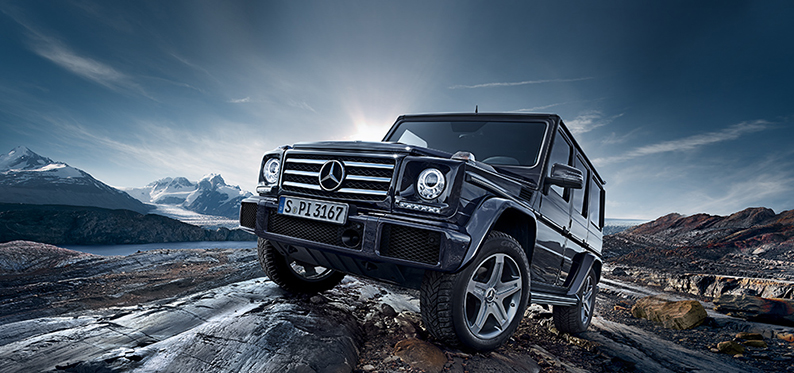
To most, a true off-roader is the obvious choice. Off-roaders are 4-Wheel-Drives, they are more sturdy, more capable, have higher ground clearance, better suspensions, etc, etc… All of which makes driving off-road easier and safer, and as such, a much better choice.
Now, all of that shouldn’t prevent you from exploring if you decide to compromise with a standard “cross-over”. (Yes, I see eyebrows rising in disapprobation from all the folks driving trail prepared vehicles, the same who look down on school-run elevated station wagons when they see one.) Simply look at all those “locals” you find in some of the most remote areas of the world, driving ageless Toyota sedans in places I wouldn’t dare bring my own Jeep ? Low clearance, two-wheel drive, sporting close to slick non-matching road tires under shot suspensions, as if it didn’t matter.

If that is not enough for you to agree with me, then go check some of the videos of the famed Paris-Dakar race early editions in the 80’s, where daredevils raced through the Sahara desert with standard street cars ! If those cars made it through then, why not a present day SUV ?
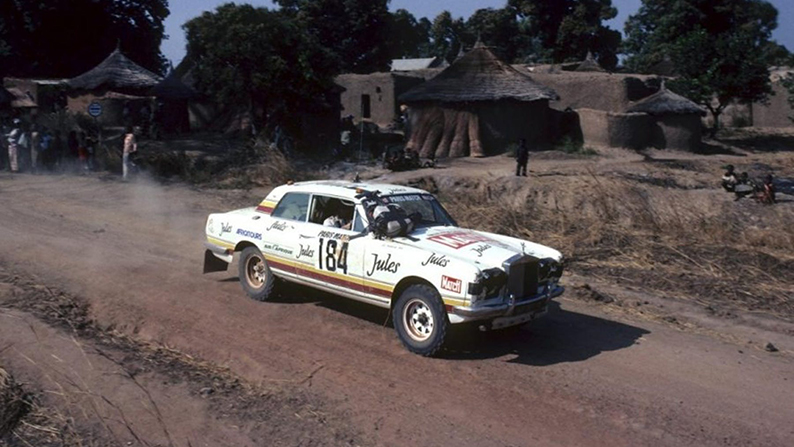
Now to be fair, and wise, the less “capable” your car is, the more “capable” a driver you’ll have to be to compensate and stay safe. What is important, essential I should say, is your knowledge of your own vehicle and its limits, and your ability to drive around them.
Which 4×4 is the best ?
The correct answer is potentially all ! What manufacturer or car you prefer is your personal choice, not what somebody else with different tastes or needs wrote on a forum or a magazine op-ed. Jeep, Toyota, Land Rover, Nissan, Mercedes, Suzuki, Ford, etc, all offer very capable trucks performing well beyond your wildest expectations. As I like to say, it’s almost always the driver who quits first, not the truck.
However, in order to make an “educated” choice, you must know & understand the basic mechanical concepts behind a 4×4. How can you possibly judge and have an opinion on something if you don’t have a clue of what it does ?
How can you decide on whether you prefer a diesel engine or a petrol one, if you don’t know their mechanical differences and what are the advantages of one over the other etc ? How to decide between a 2×4, a 4×4 or an all-wheel-drive, if you don’t know how functions the drivetrain ?
Mechanic is a vast, complex & fascinating subject. You don’t need to be a certified mechanic to buy and drive a car, but being knowledgeable sure helps taking better decisions in both cases.
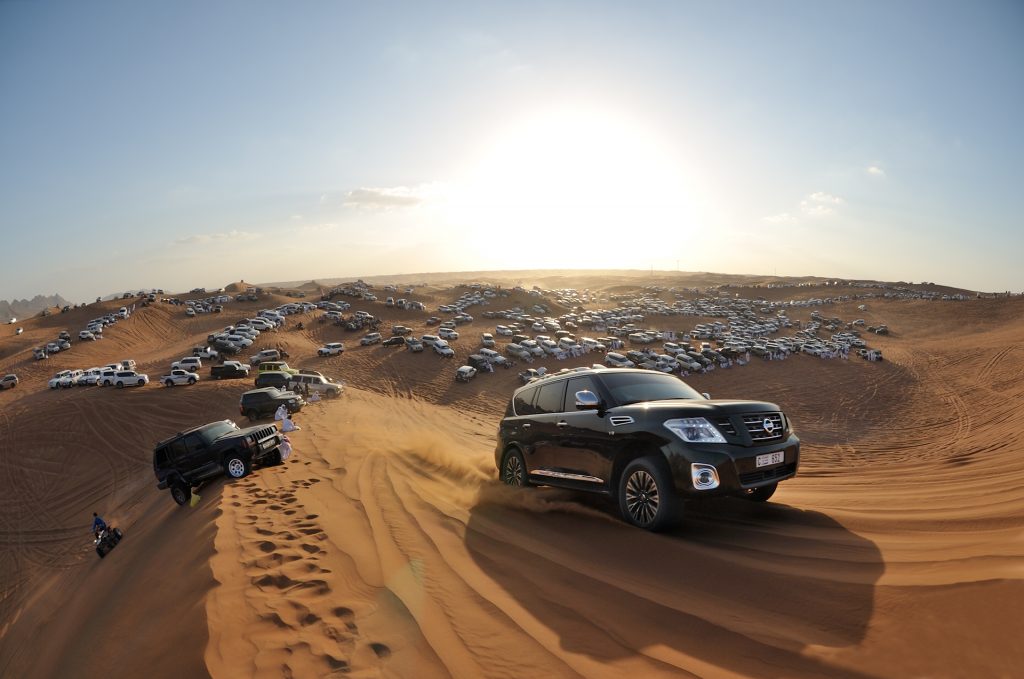
Do you need to “up-grade” your vehicle ?
Remember, we are not talking about rock crawling in the Moab or conquering the Rubicon here, we’re talking about exploring the world off the beaten track in a reliable vehicle, you can count on day in and day out.
This brings me to my second controversial assessment. Does my stock vehicle needs specific after-market upgrades to go explore off-road or not ?
The correct answer has no room for potential ego concerns, looks, or marketing noise, and should be only focusing on mechanical engineering. If you stick to science and reason, then the answer is, for the most part, No !
(a great article from outside magazine making the same point, in case you want a second opinion !)
Your car is the result of years of research by talented engineers, and tests performed by highly qualified technicians. It’s also the sum of many inter-related parts evolving in inter-connected broader systems. Changing just one of those carefully specified items will have an effect on all the others, often for the worst. Who should you trust more ? Your car company engineers, or some independent after market dealer you heard of for the first time on an obscure web forum ?
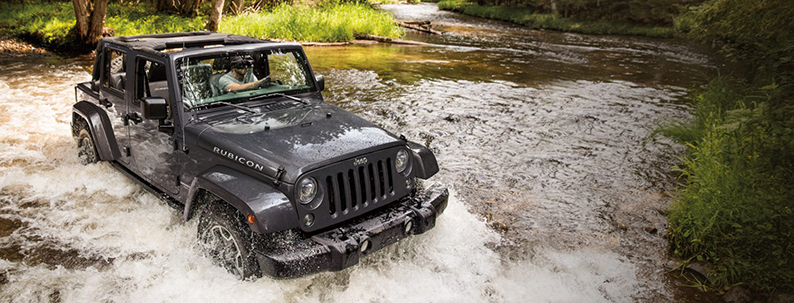
Let’s illustrate this with a simple example: Tires.
I have a Jeep Wrangler, and I have lived in Dubai for a few years. One of the first things a new Jeep owner will do there (and pretty much everywhere else) is invest in a “lift” to raise the car and fit in bigger tires. The idea, (besides the obvious “Call of Duty” look upgrade), is higher clearance. Ok, I get that. But going for a bigger set of tires has a lot of ramifications most don’t realize. First, it has an effect on your speedometer (big deal… Until you get pulled over !). It also has an effect on your axles and your differentials. It also affects your transmission and the gears ratio, which then modify your overall power output, already challenged by the extra weight. And when I say affect, modify and challenge, you can guess that I don’t mean it in a positive way. Bigger tires will put stress on your gears unless you re-configure them all accordingly. Stress means wear, wear means breakdown. It’s like investing money to make your original product worse. Not exactly what I call a good investment.
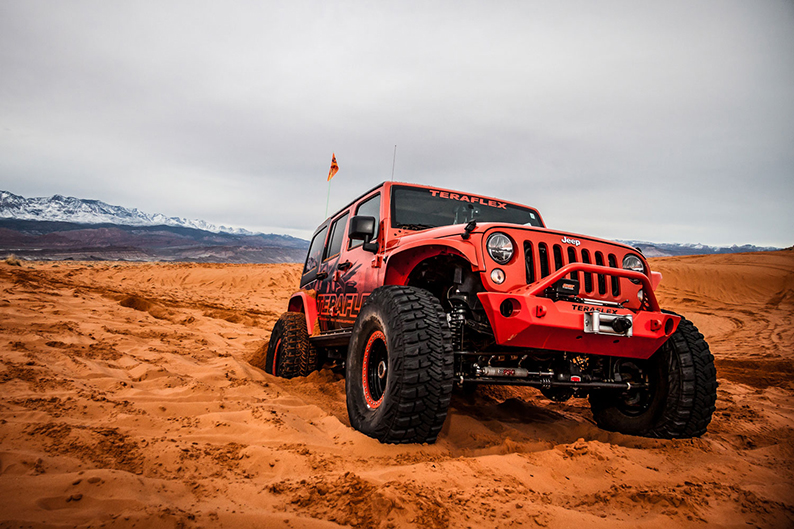
I’m not saying it’s wrong to go for higher clearance if you really need it, only it requires a lot more mechanical adjustments than a simple “lift”, and therefor a very high price tag for something I have never felt mandatory to drive off-road, even in very rough environments. (Read the very instructive series of posts – part 1, part 2, part 3, from tuneruniversity.com on the subject)
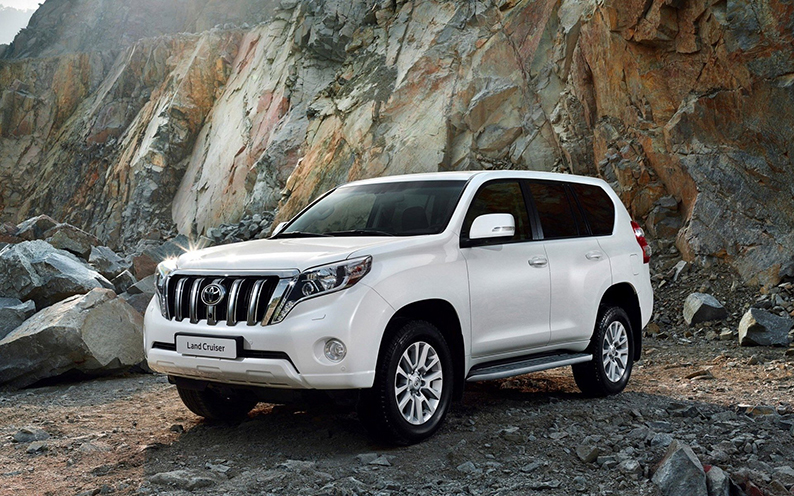
Let’s take a look at the other popular upgrades seen on off-road vehicles.
Tires
Tires are probably the most important factor to consider when going off-road. It’s like choosing the right pair of shoes when going on a trek. They need to be adapted to your destination and in good condition to avoid punctures. A set of standard road tires won’t last long on a rocky trail, nor offer the required traction on loose ground. An upgrade to All-Terrain (AT) types is a must, if not already fitted on originally. As mentioned in the name, it’s the perfect compromise working well on all terrains.
Is it worth it going the extra mile and invest in mud tires with deeper sections ? Not really. More expensive, not as responsive on tarmac (where you still end up spending most of your time) and also for some, particularly noisy.
This article being a general overview I don’t intend, or have the skill set, to offer you a deep analysis of various tires and brands on the market today. But I recommend the extensive and well documented one performed by the Overland Journal.
On a personal note, my Jeep Wrangler came stock with a GoodYear Wrangler All-Terrain set. I used them for 85.000 km without any issues. I then switch to Cooper Discoverer AT/3 and now have 40.000 km on them. Have I seen an improvement, even a slight difference as the above mentioned review has ? No. They both performed extremely well in all conditions and have been very reliable. See, it takes a lot of testing, technical knowledge and measuring tools to point slight differences in tires. None of which you have or need. Stick to main brands and you’ll be just fine.

Suspensions
Another key element in your car handling abilities. What is installed originally on your car is a compromise between road and off-road. A lot of people can’t wait to improve to more trail oriented specs. But by tilting the scale on one side, you can’t avoid compromising the other. Any off-road improvement is at the expense of road handling performance. Also, off road shocks are often stiffer, as such they tend to be less comfortable. If you spend an entire day on a bumpy trail, your back won’t approve the stiffer shocks, trust me !
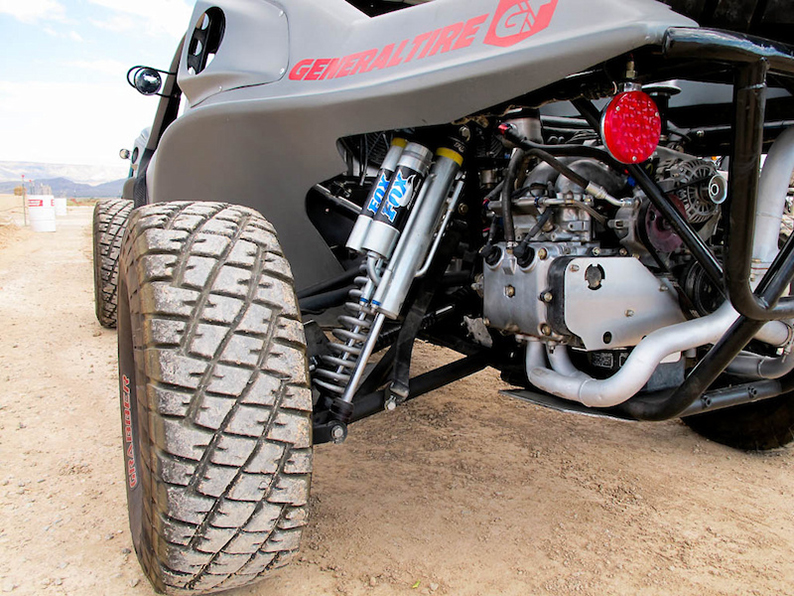
Air Flow – Air filters
In a desperate attempt to gain precious horse power, it is often recommended to switch from your original paper air filter to oiled cotton filter like K&N types. (I have, but it has more to do with ecological reason that potential horse power gain) Without going too technical here and explain the fundamental principles of combustion engines, air is the key element when it comes to power. The more you suck in, the better the engine “breathe” and the better/stronger it works.
Only air is dirty, filled with corrosive micro particles that needs to be filtered out, in order to protect the integrity of your pistons, and keep them running smoothly. A traditional paper filter does a better job filtering the dirt from the air, (by such a ridiculously tiny margin!), as such it “obstructs” air more that its K&N counterpart. Less air in, means less power. In reality the difference is so limited there is no way you’ll notice. And if really you need to go to that last extra available horse power to conquer an obstacle, you have a much bigger problem on your hands; lack of driving skills.
Air Flow -Exhaust systems
Same concept as with air filters; optimizing the overall air flow and breathing abilities of your engine adds power. But again it’s so marginal, it only makes sense in racing where every micro second counts. Not in overlanding the world. People only invest in those for the deeper sound and chromy looks.
Safety features
(There will be a post dedicated to what you need to carry with you inside the car while off-roading. This paragraph is really about safety minded modifications. More specifically, wether or not you need to invest in a winch.)
A winch
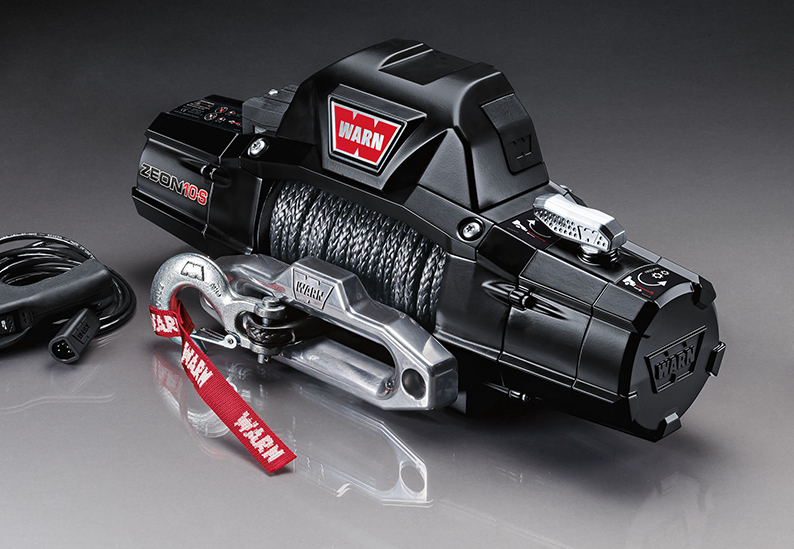
That is probably in my book the most important after market addition you should consider. Especially if, like me, you like to venture out alone. Getting stranded in sand, mud or snow is very common, no matter your skill level. Getting out of a stuck can be tricky if no one is there to pull you out. Now, like with everything thing else, you need to know how to use it if you want the investment to be worth it. It’s not as simple as you think, and many fingers have been left on the trail by reckless inexperienced users. A very good tutorial by Bruce Elfstrom will help you understand the basics. But better start learning in the field before you actually need it for real.
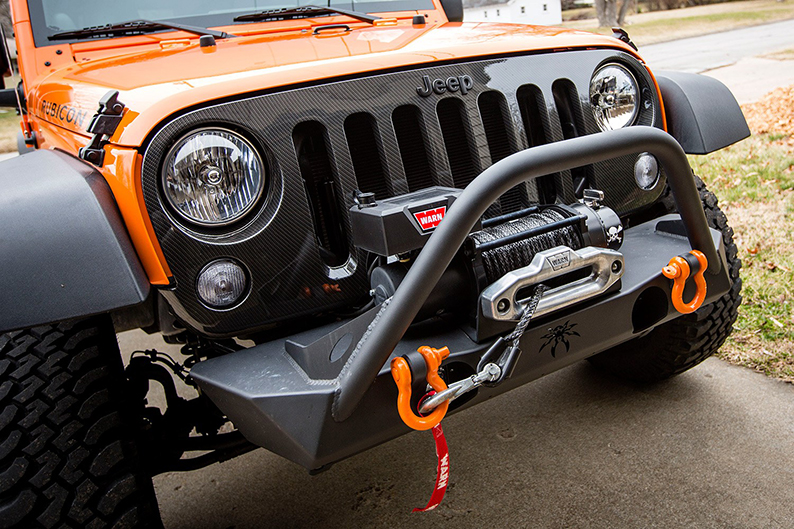
Spatial arrangements – Inside
Many try to transform their rig onto off-road campers. Storage, sleeping zone, cooking arrangements, etc, it can be really impressive and clever. But again, think about overall weight and how it affects your driving experience. Ask my wife and she’s all for that. The more comfort I bring to the traveling experience, the better. Ask me, not so much. The less I bring with me, the less storage I need for it, the more room I have to sleep, the better my car responds on the challenging trails. Cooking ? I have seen very clever “kitchens” installed in trucks. Mine fits in my backpack with the rest of my gears, and despite the minimal look of it, I’m known to be a pretty good cook on the road.
Spatial arrangements – Outside
A roof-rack.
Not a bad idea for extra storage if you need it, or for a potential roof-tent. But again, it comes with a baggage (no pounds intended). The wind resistance is no small issue here and affects your gas mileage in a big way. It is also affecting the balance of your truck and makes it more susceptible to tip over. Some love it, some don’t. I’m not particularly decided on the issue my self. The Vehicle dependent expedition guide from Tom Sheppard covers the subject very well without taking sides either. In the end it’s your choice.
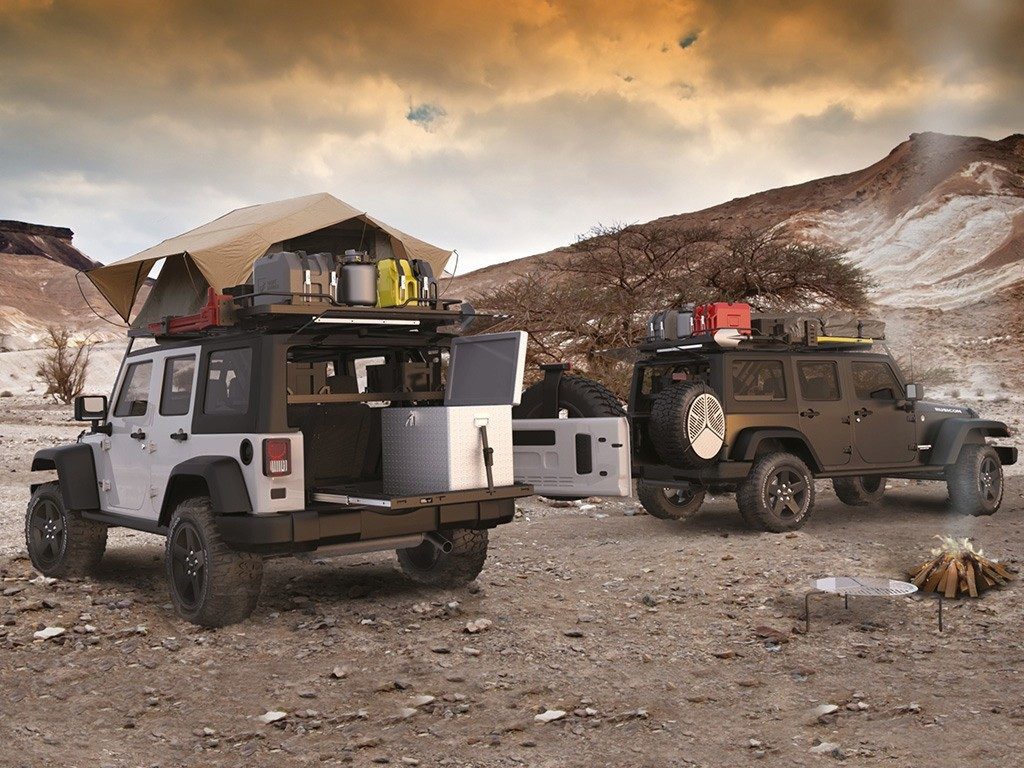
What to remember
It’s not the specific car you drive that matters the most, it’s how you drive it !
It’s not by transforming your rig into a call of duty monster truck that will make it perform better !
It’s not by loading it up inside out with everything your favorite “overland” retailer has to offer, that you can pretend to be ready for adventure !
Instead stay simple… Learn how to drive first… Only with time and experience driving your own car, you will understand the mechanical and physical limits of it. Learn then how to compensate those with your own driving skills. Once you have reach your own limits, then and only then, start looking for ways to improve the performance of your car. Chances are, you’ll never have to !
Next chapter, Your equipment !
